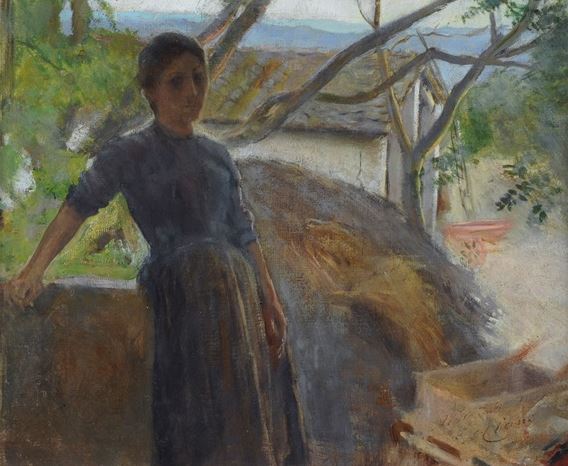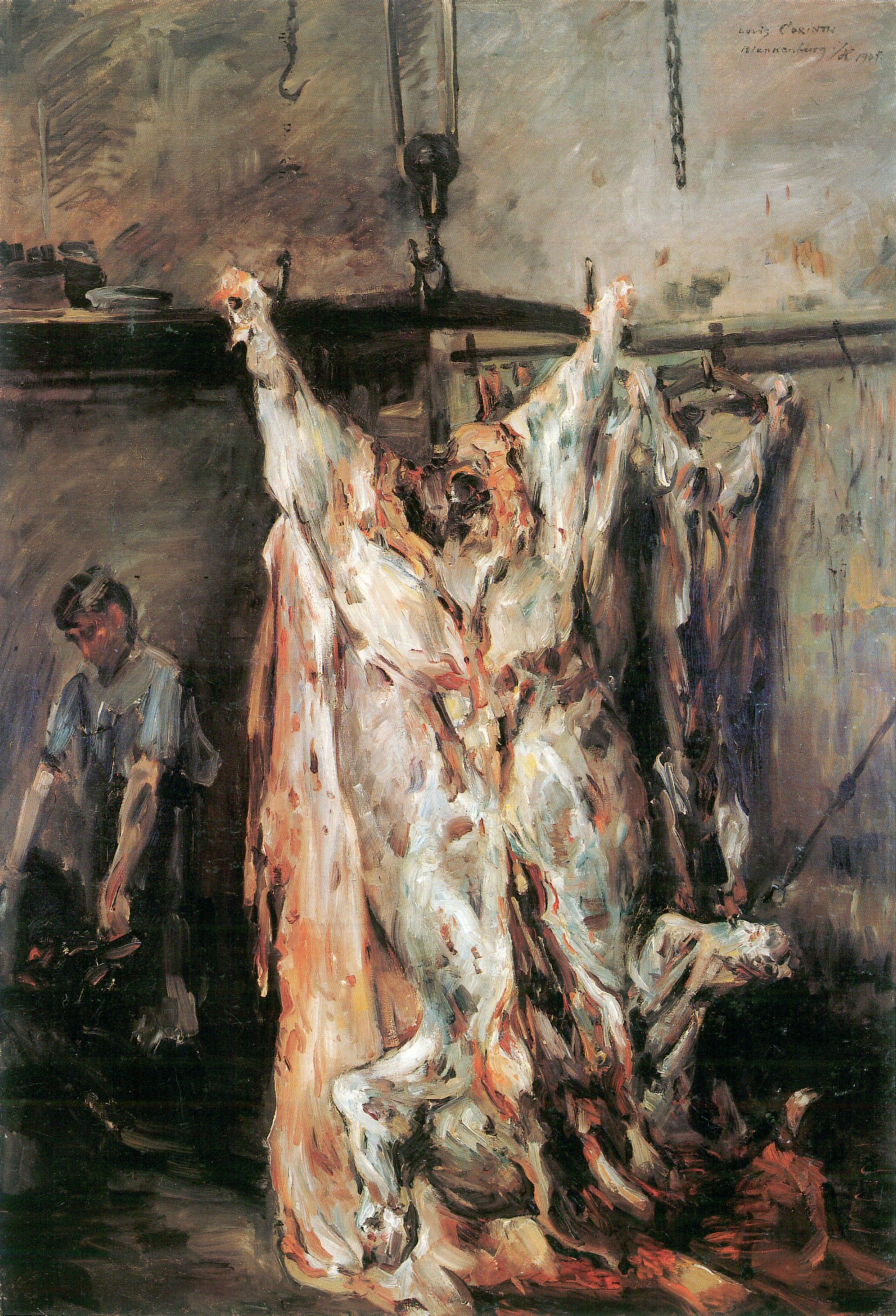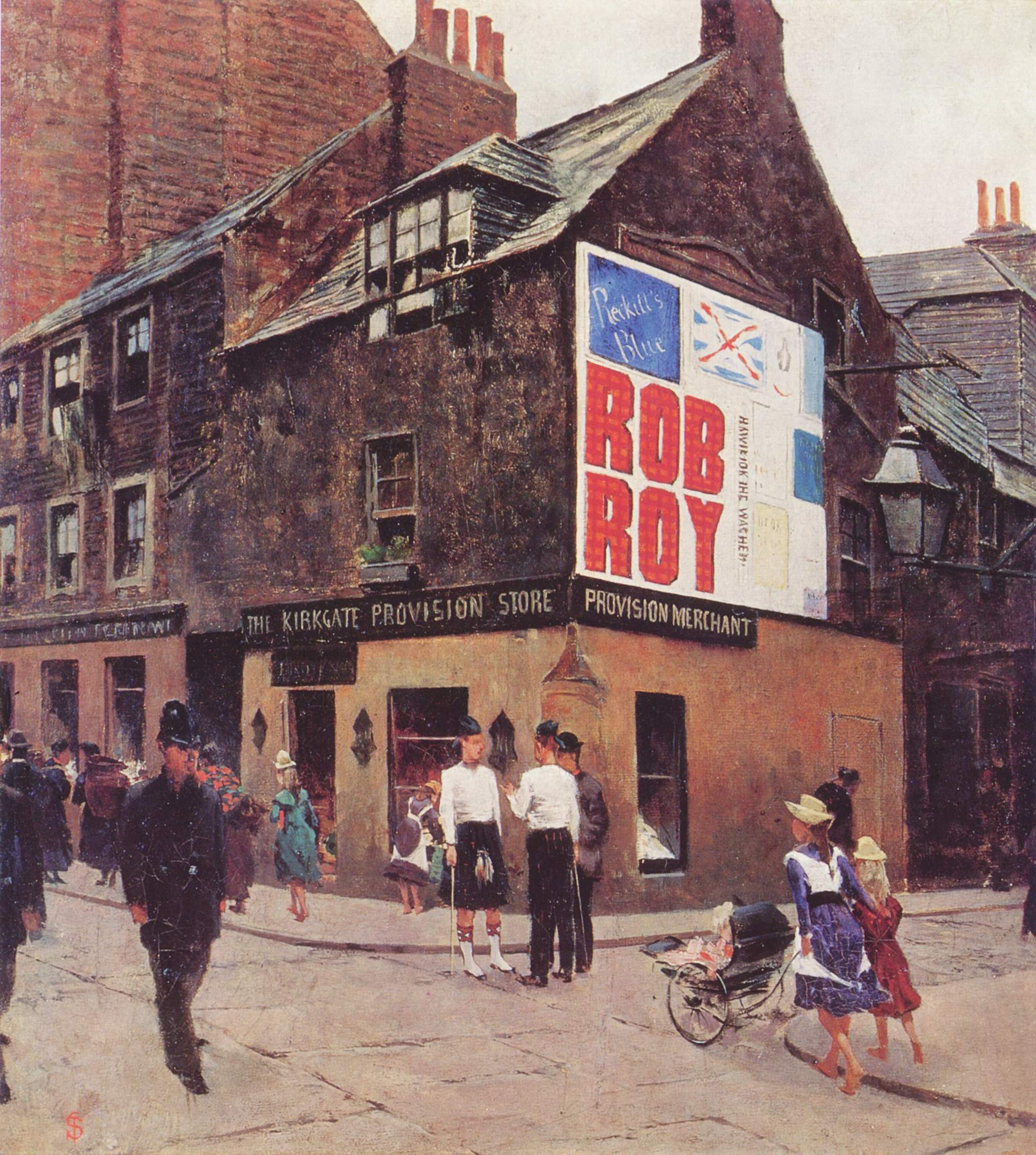|
Cesare Ciani
Cesare Ciani (28 February 1854, in Florence – 13 February 1925, in Florence) was an Italian painter. Life and work He initially studied at the Technical Institute, then served in the Army for three years. It wasn't until 1878, at the age of twenty-four, that he entered the Accademia di Bellr Arti, where he studied painting with Giuseppe Ciaranfi Giuseppe Ciaranfi (1838, Pistoia - 18 January 1902, Florence) was an Italian history and genre painter. Biography He initially studied with Enrico Pollastrini in Florence. In 1859, he was admitted to the nude figure lessons at the Accademia di ... and Giovanni Fattori. The latter was very influential in terms of Ciani's choice of subjects for his works; portraits and landscapes with figures. In 1888, he presented his painting "The Widow" at the Circolo degli Artisti and, the following year, it received honorable mention at the Exposition Universelle in Paris. This was the beginning of his regular participation in art exhibiti ... [...More Info...] [...Related Items...] OR: [Wikipedia] [Google] [Baidu] |
Florence
Florence ( ; it, Firenze ) is a city in Central Italy and the capital city of the Tuscany region. It is the most populated city in Tuscany, with 383,083 inhabitants in 2016, and over 1,520,000 in its metropolitan area.Bilancio demografico anno 2013, datISTAT/ref> Florence was a centre of medieval European trade and finance and one of the wealthiest cities of that era. It is considered by many academics to have been the birthplace of the Renaissance, becoming a major artistic, cultural, commercial, political, economic and financial center. During this time, Florence rose to a position of enormous influence in Italy, Europe, and beyond. Its turbulent political history includes periods of rule by the powerful Medici family and numerous religious and republican revolutions. From 1865 to 1871 the city served as the capital of the Kingdom of Italy (established in 1861). The Florentine dialect forms the base of Standard Italian and it became the language of culture throughout Ital ... [...More Info...] [...Related Items...] OR: [Wikipedia] [Google] [Baidu] |
Accademia Di Belle Arti Di Firenze
The Accademia di Belle Arti di Firenze ("academy of fine arts of Florence") is an instructional art academy in Florence, in Tuscany, in central Italy. It was founded by Cosimo I de' Medici in 1563, under the influence of Giorgio Vasari. Michelangelo, Benvenuto Cellini and other significant artists have been associated with it. Like other state art academies in Italy, it became an autonomous degree-awarding institution under law no. 508 dated 21 December 1999, and falls under the Ministero dell'Istruzione, dell'Università e della Ricerca, the Italian ministry of education and research. The adjacent (but unaffiliated) Galleria dell'Accademia houses the original ''David'' by Michelangelo. History The Accademia e Compagnia delle Arti del Disegno, or "academy and company of the arts of drawing", was founded on 13 January 1563 by Cosimo I de' Medici, under the influence of Giorgio Vasari. It was made up of two parts: the Company was a kind of guild for all working art ... [...More Info...] [...Related Items...] OR: [Wikipedia] [Google] [Baidu] |
Giuseppe Ciaranfi
Giuseppe Ciaranfi (1838, Pistoia - 18 January 1902, Florence) was an Italian history and genre painter. Biography He initially studied with Enrico Pollastrini in Florence. In 1859, he was admitted to the nude figure lessons at the Accademia di Belle Arti. Istituto Matteucci short biography. Three years later, he made his debut with a work depicting , discussing Florentine history with . Together with other painters and men of letters, h ... [...More Info...] [...Related Items...] OR: [Wikipedia] [Google] [Baidu] |
Giovanni Fattori
Giovanni Fattori (September 6, 1825August 30, 1908) was an Italian artist, one of the leaders of the group known as the Macchiaioli. He was initially a painter of historical themes and military subjects. In his middle years, inspired by the Barbizon school, he became one of the leading Italian plein-airists, painting landscapes, rural scenes, and scenes of military life. After 1884, he devoted much energy to etching. Biography Youth and training Fattori was born in modest circumstances in Livorno. His early education was rudimentary and his family initially planned for him to study for a qualification in commerce, but his skill in drawing persuaded them to apprentice him in 1845 to Giuseppe Baldini (1807–1876), a local painter of religious themes and genre subjects. The following year he moved to Florence where he first studied under Giuseppe Bezzuoli and, later in the year, at the Academy of Fine Arts in Florence. At that time, however, his energies were directed less towa ... [...More Info...] [...Related Items...] OR: [Wikipedia] [Google] [Baidu] |
Exposition Universelle (1889)
The Exposition Universelle of 1889 () was a world's fair held in Paris, France, from 5 May to 31 October 1889. It was the fourth of eight expositions held in the city between 1855 and 1937. It attracted more than thirty-two million visitors. The most famous structure created for the Exposition, and still remaining, is the Eiffel Tower. Organization The Exposition was held to celebrate the 100th anniversary of the Storming of the Bastille, which marked the beginning of French Revolution, and was also seen as a way to stimulate the economy and pull France out of an economic recession. The Exposition attracted 61,722 official exhibitors, of whom twenty-five thousand were from outside of France. Admission price Admission to the Exposition cost forty centimes, at a time when the price of an "economy" plate of meat and vegetables in a Paris cafe was ten centimes. Visitors paid an additional price for several of the Exposition's most popular attractions. Climbing the Eiffel Towe ... [...More Info...] [...Related Items...] OR: [Wikipedia] [Google] [Baidu] |
Lovis Corinth
Lovis Corinth (21 July 1858 – 17 July 1925) was a German artist and writer whose mature work as a painter and printmaker realized a synthesis of impressionism and expressionism. Corinth studied in Paris and Munich, joined the Berlin Secession group, later succeeding Max Liebermann as the group's president. His early work was naturalistic in approach. Corinth was initially antagonistic towards the expressionist movement, but after a stroke in 1911 his style loosened and took on many expressionistic qualities. His use of color became more vibrant, and he created portraits and landscapes of extraordinary vitality and power. Corinth's subject matter also included nudes and biblical scenes. Early life Corinth was born Franz Heinrich Louis on 21 July 1858 in Tapiau, in the Province of Prussia in the Kingdom of Prussia. The son of a tanner, he displayed a talent for drawing as a child. In 1876 he went to study painting in the academy of Königsberg. Initially intending to be ... [...More Info...] [...Related Items...] OR: [Wikipedia] [Google] [Baidu] |
Macchiaioli
The Macchiaioli () were a group of Italian painters active in Tuscany in the second half of the nineteenth century. They strayed from antiquated conventions taught by the Italian art academies, and did much of their painting outdoors in order to capture natural light, shade, and colour. This practice relates the Macchiaioli to the French Impressionists who came to prominence a few years later, although the Macchiaioli pursued somewhat different purposes. The most notable artists of this movement were Giuseppe Abbati, Cristiano Banti, Odoardo Borrani, Vincenzo Cabianca, Adriano Cecioni, Vito D'Ancona, Serafino De Tivoli, Giovanni Fattori, Raffaello Sernesi, Silvestro Lega and Telemaco Signorini. The movement The movement originated with a small group of artists, many of whom had been revolutionaries in the uprisings of 1848. In the late 1850s, the artists met regularly at the Caffè Michelangiolo in Florence to discuss art and politics. These idealistic young men, dissatisfied ... [...More Info...] [...Related Items...] OR: [Wikipedia] [Google] [Baidu] |
Llewelyn Lloyd (painter)
Llewelyn Lloyd (1879 – 1949) was a British-Italian painter, belonging to the Post-Macchiaioli movement. Biography Born to a Welsh merchant working in Livorno, as a boy orphan, Llewelyn came under the care of an uncle. The uncle wished for the young man to study commerce, but instead Llewelyn chose to study (1894–1895) in the studio of Guglielmo Micheli where he met Modigliani, Romiti, Martinelli, and Ghiglia. There he also met Fattori, whom he followed to Florence. He first exhibited at the 1897 Florentine Promotrice, with "Mattino al Calambrone" (Morning at Calambrone). He began painting sea- and land-scapes using divisionist techniques. He traveled to Liguria where he met the painters, including Lori and Discovolo, who had coalesced around Nomellini and became known as the ''Gruppo di Albaro'', based on the hillside neighborhood where they worked. Returning to Florence, in 1907 he exhibited in a hall at the Promotrice Fiorentina, titled the Secessione (Secession), ... [...More Info...] [...Related Items...] OR: [Wikipedia] [Google] [Baidu] |
Treccani
The ''Enciclopedia Italiana di Scienze, Lettere e Arti'' (Italian for "Italian Encyclopedia of Science, Letters, and Arts"), best known as ''Treccani'' for its developer Giovanni Treccani or ''Enciclopedia Italiana'', is an Italian-language encyclopaedia. The publication ''Encyclopaedias: Their History Throughout The Ages'' regards it as one of the greatest encyclopaedias along with the ''Encyclopædia Britannica'' and others. History The first edition was published serially between 1929 and 1936. In all, 35 volumes were published, plus one index volume. The set contained 60,000 articles and 50 million words. Each volume is approximately 1,015 pages, and 37 supplementary volumes were published between 1938 and 2015. The director was Giovanni Gentile and redactor-in-chief . Most of the articles are signed with the initials of the author. An essay credited to Benito Mussolini entitled "The Doctrine of Fascism" was included in the 1932 edition of the encyclopedia, although it w ... [...More Info...] [...Related Items...] OR: [Wikipedia] [Google] [Baidu] |
1854 Births
Events January–March * January 4 – The McDonald Islands are discovered by Captain William McDonald aboard the ''Samarang''. * January 6 – The fictional detective Sherlock Holmes is perhaps born. * January 9 – The Teutonia Männerchor in Pittsburgh, U.S.A. is founded to promote German culture. * January 20 – The North Carolina General Assembly in the United States charters the Atlantic and North Carolina Railroad, to run from Goldsboro through New Bern, to the newly created seaport of Morehead City, near Beaufort. * January 21 – The iron clipper runs aground off the east coast of Ireland, on her maiden voyage out of Liverpool, bound for Australia, with the loss of at least 300 out of 650 on board. * February 11 – Major streets are lit by coal gas for the first time by the San Francisco Gas Company; 86 such lamps are turned on this evening in San Francisco, California. * February 13 – Mexican troops force William Wa ... [...More Info...] [...Related Items...] OR: [Wikipedia] [Google] [Baidu] |





